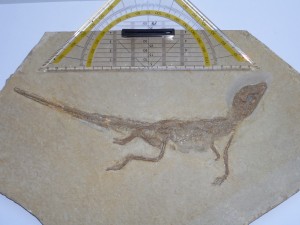So I hit the 9 month barrier for my PhD the other day. Where ze hell did all that time go??
Well, you can actually see if you want – I’ve uploaded the 9 month report to Figshare, excluding the preliminary results (which are beginning to look cool btw). You can find it here, where it’s already had almost 200 hits. Figshare is so awesome it hurts.
Summary points:
- The primary task is to assess biodiversity patterns over the Jurassic/Cretaceous interval
- Primary data collection for this is now complete, and some preliminary stats run on it to account for imperfections in the fossil record
- There is a hell of a lot to do
I’m actually in Munich at the moment, working on alternative route to assessing this first point. I’m using a method called ‘phylogenetic diversity’, which essentially maps evolutionary trees onto time (stratigraphy), and you can interpolate where you know species should be but haven’t been found, based on their evolutionary relationships and artificially inflate diversity through time. I’m doing this for about 500 species atm, so it’s taking a lot of time, but looking pretty awesome atm – stay tuned! 🙂
Oh, the title? Not a clue – I’ve only had one coffee. PhD research is tough – you work long hours, do difficult work, and get paid a pittance, so times it can be a bit much, but it’s totally worth it; there are many paths the research could take; and thyme, never enough thyme..
Anyway, have a flick through and let me know what you think! If you think there’s something I’m missing, or an avenue in particular you’d like me to explore, drop a comment here (this is funded by UK taxpayers’ cashmoney after all) 🙂

